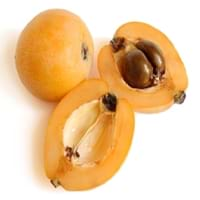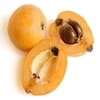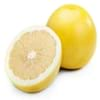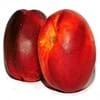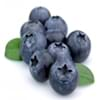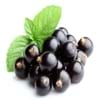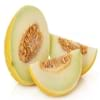Health Benefits
Cancer prevention, Heart care, Reduces nervous tension, Reduces blood circulation problems, Reduces stress, Regulation of heart rate, Strengthening of bones
Boosts immune system, Boosts respiratory health, Cancer prevention, Digestive aid, Piles treatment
General Benefits
Anti-inflammatory properties, Controls blood pressure, Digestive aid, Eye care, Helps in weight loss, Improves eye vision, Maintains healthy cholesterol level, Strengthens bones
Beneficial in improving nerve function, Protects against parasites and worms, Relieves pain
Skin Benefits
Anti-aging benefits, Reduces wrinkles, Treatment of dark spots, Treatment of skin diseases
Anti-aging benefits, Brightens and lightens complexion, Exfoliates skin, Hydrates skin, Treatment of dark spots
Hair Benefits
Protects hair
Prevents hair loss
Allergy Symptoms
Diarrhea, Itching of mouth, Nasal congestion, Sneezing, Swelling of face, Watery eyes
Abdominal pains, Breathing difficulty, Dizziness, Eczema, Fainting, Hives, Itching, Nasal congestion, Swelling of face, Tingling sensation in mouth, Vomiting
Side Effects
Allergic reaction
Decrease in blood sugar levels, Induces acid reflux, Allergic reaction, Tooth decay, May form gallstones
Best Time to Eat
Along with meal, As a snack in the late afternoon, Don't consume at night and before bed, Morning time (before lunch)
Along with meal, As a snack in the late afternoon, Don't consume at night and before bed, Strictly avoid empty stomach
Vitamin B5 (Pantothenic Acid)
Not Available
Vitamin C (Ascorbic Acid)
Not Available
Vitamin E (Tocopherole)
Not Available
Vitamin K (Phyllochinone)
Not Available
Lutein+Zeaxanthin
Not Available
Calories in Fresh Fruit with Peel
Not Available
Calories in Fresh Fruit without Peel
Not Available
Calories in Frozen Form
Not Available
Calories in Dried Form
Not Available
Calories in Canned Form
Not Available
Calories in Juice
Not Available
Calories in Jam
Not Available
Calories in Pie
Not Available
Type
Tree fruit, Tropical
Tropical
Season
Winter
Spring, Summer
Varieties
Ahdar, Ahmar, Asfar, Blush, Champagne, Early Red, Eulalia, Fire Ball, Golden Red, Golden Yellow, Oliver, Thales, Thames Pride, Victor and Wolfe
PKM 1, Urigam, Hasanur, Tumkur prathisthan, DTS 1 and Yogeshwari
Color
Orange, Yellow
Brown, Reddish-brown
Inside Color
Orange
Brown
Shape
Oval
Curving Cylinder
Taste
Sweet, Tart
Sour-Sweet
Soil Type
Clay, Loam, Sand, Well-drained
Loam, Sandy, Sandy loam, Well-drained
Climatic Conditions
Warm to hot climate
Humid to dry, Rainfall, Warm to hot climate
Facts about
- Loquats are used in plum wine manufacturing.
- Dried leaves of loquat are used to make herbal tea.
- The seeds of loquat are slightly toxic & the symptoms of intoxication are nausea, vomiting & shortness of breath.
- Tamarind is used to prevent body odor.
- African children use the tamarind seeds in games.
- No cases of tamarind toxicity or allergy reported till date.
Other Countries
Brazil, Chile, China, Egypt, Israel, Italy, Morocco, Pakistan, Portugal, Spain, Turkey
Africa, Australia, Brazil, China, Mexico, Nigeria, Sudan, Taiwan
Top Importer
China
United States of America
Top Exporter
Spain
Thailand
Botanical Name
Eriobotrya japonica
Tamarindus indica
Synonym
Crataegus bibas or Mespilus japonica or Photinia japonica
Tamarindo, tamarindus
Subkingdom
Tracheobionta
Tracheobionta
Division
Magnoliophyta
Magnoliophyta
Class
Magnoliopsida
Liliopsida
Genus
Eriobotrya
Tamarindus
Species
E. japonica
Tamarindus indica
Generic Group
Rose
Tamarind Sub
Difference Between Loquat and Tamarind
We might think that Loquat and Tamarind are similar with respect to nutritional value and health benefits. But the nutrient content of both fruits is different. Loquat and Tamarind Facts such as their taste, shape, color, and size are also distinct. The difference between Loquat and Tamarind is explained here.
The amount of calories in 100 gm of fresh Loquat and Tamarind with peel is 47.00 kcal and Not Available and the amount of calories without peel is Not Available and 239.00 kcal respectively. Thus, Loquat and Tamarind belong to Low Calorie Fruits and High Calorie Fruits category.These fruits might or might not differ with respect to their scientific classification. The order of Loquat and Tamarind is Rosales and Fabales respectively. Loquat belongs to Rosaceae family and Tamarind belongs to Fabaceae family. Loquat belongs to Eriobotrya genus of E. japonica species and Tamarind belongs to Tamarindus genus of Tamarindus indica species. Beings plants, both fruits belong to Plantae Kingdom.
